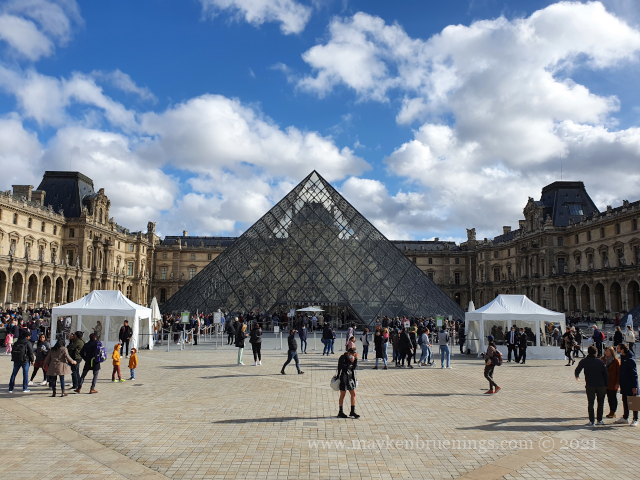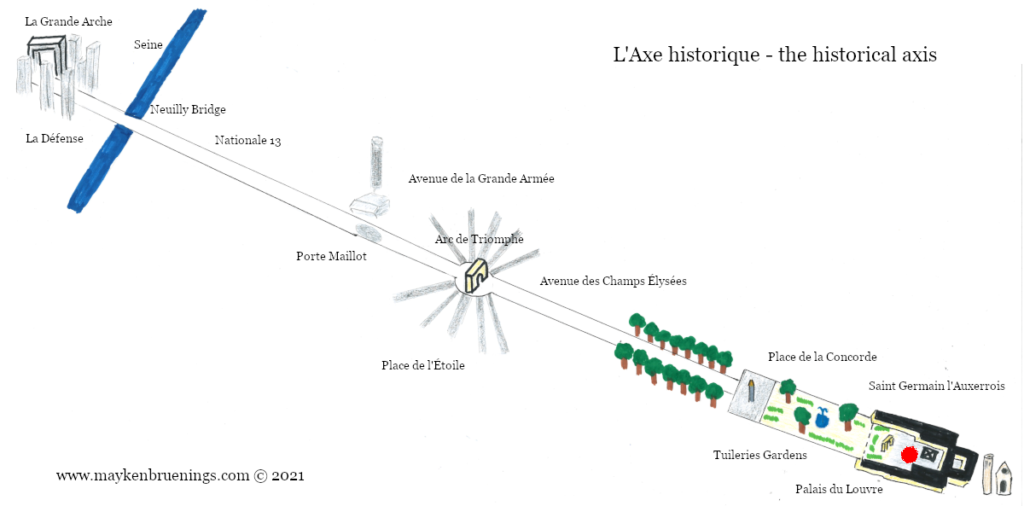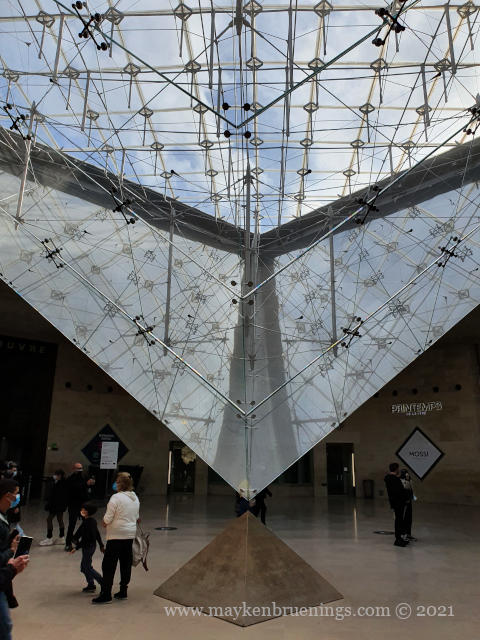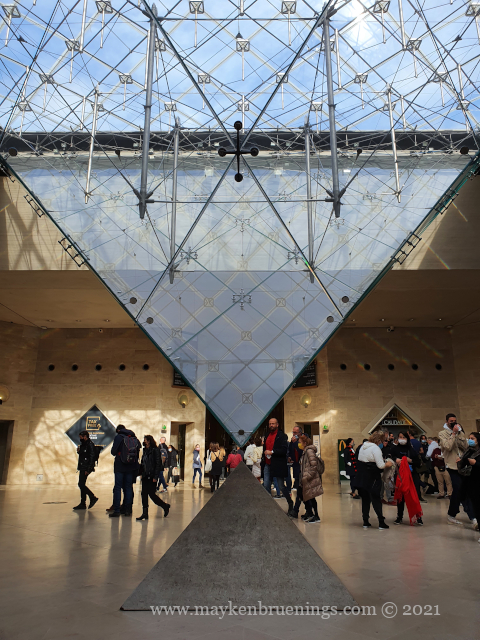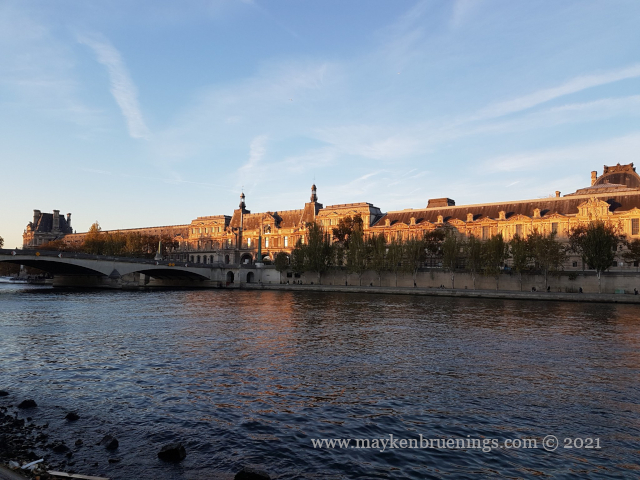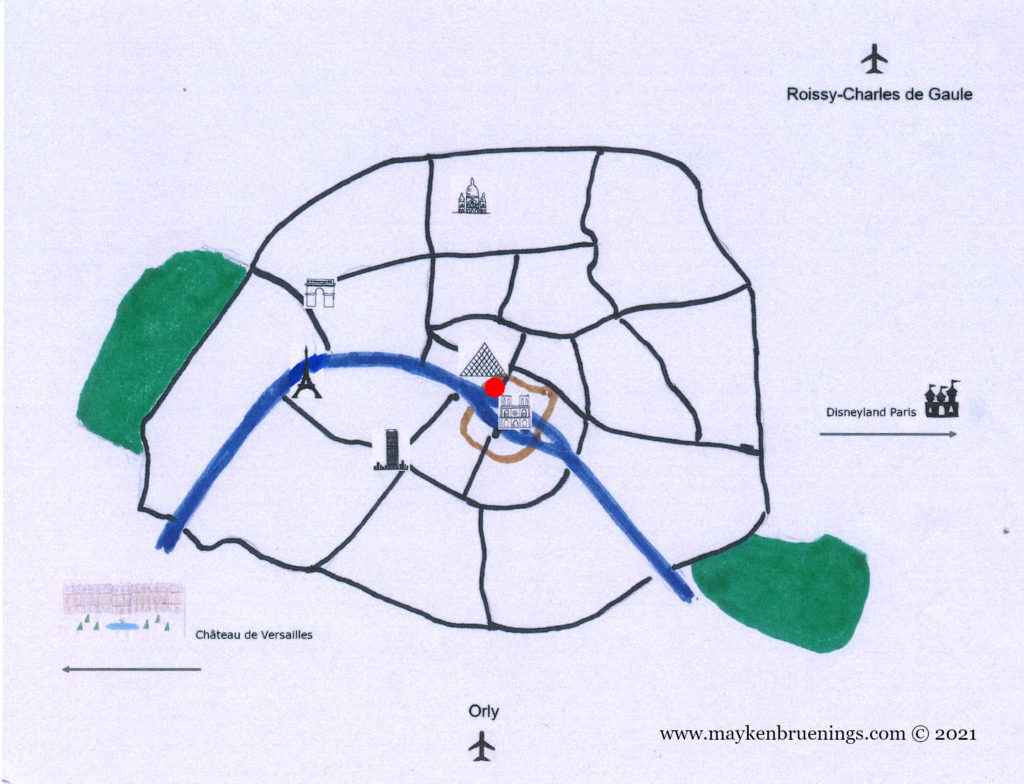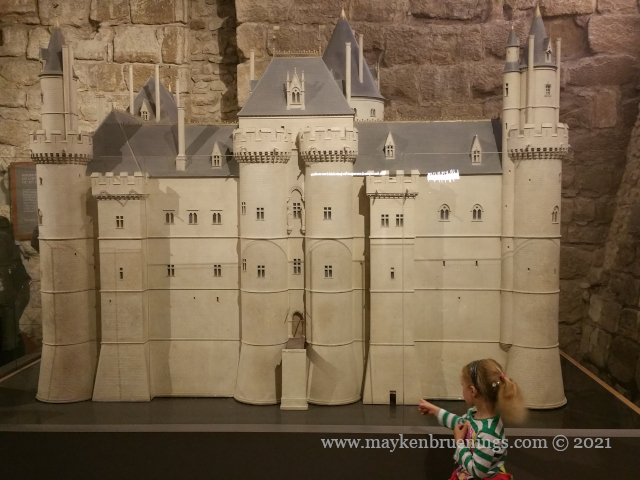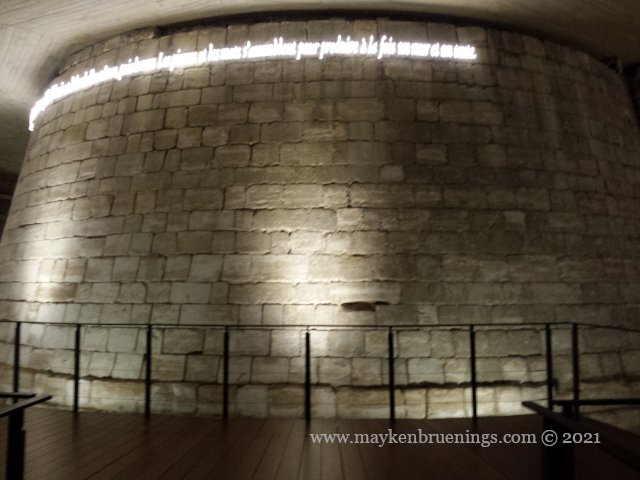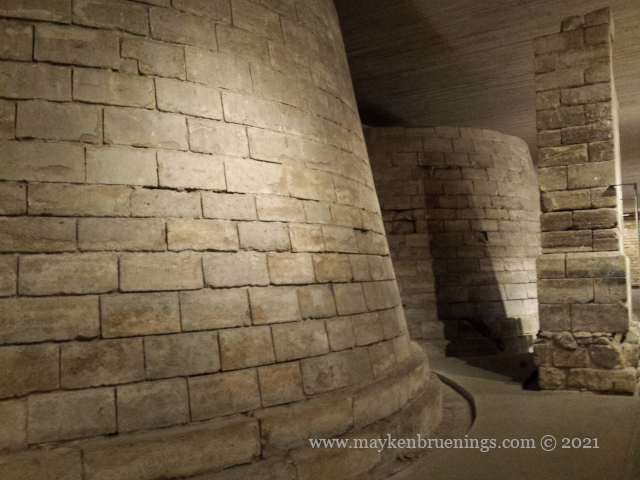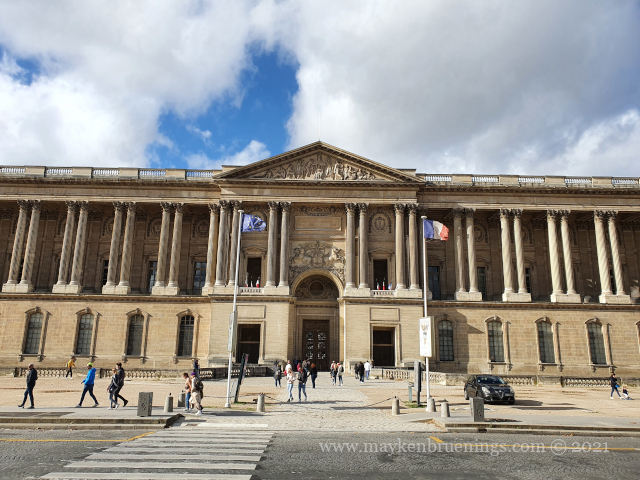
The main entrance
When the Louvre was a royal palace, its main entrance was on the east side, the majestic gate facing the church Saint Germain l’Auxerrois. The triangular bas-relief on the pediment consists of two stone slaps each 17.5 meters long and weighing several tons.
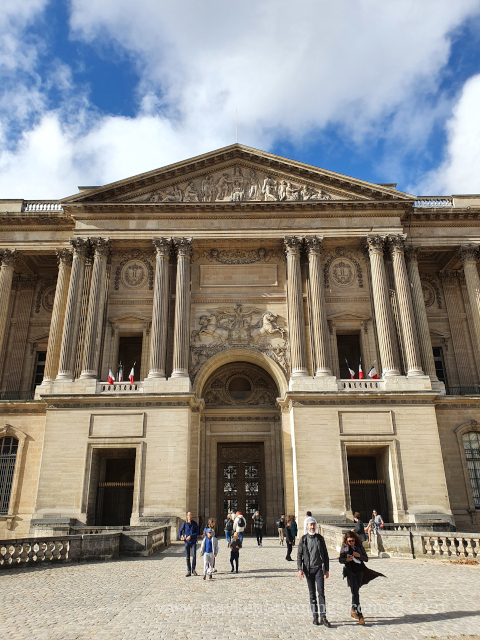
Napoléon transformed into Louis XIV
Napoléon Ier was represented at the center, with one of the Muses writing “Napoleon completed the Louvre”. This didn’t please King Louis XVIII, and the inscription was changed to “Ludovico Magno”, in reference to the Sun King Louis XIV. The crown was removed from Napoléon’s head and replaced with the curly wig of the Sun King. However, Napoléon’s face remained, along with a shield featuring his imperial eagle and his bees.
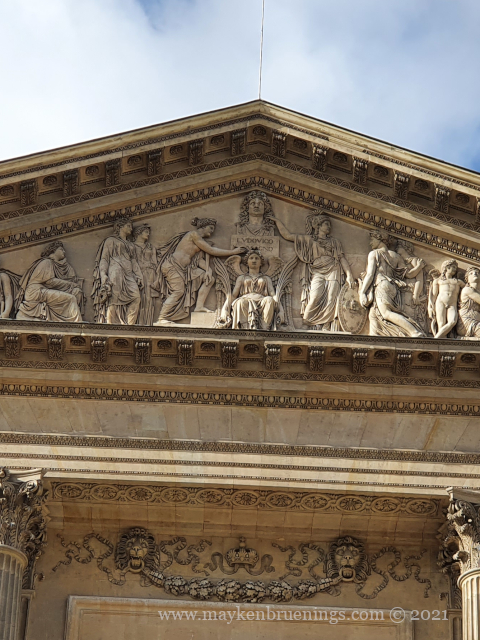
From castle to palace
King François Ier (1494-1547) began the transformation of the Château du Louvre to the Palais du Louvre by knocking down the keep. His son and successor Henri II continued his project.
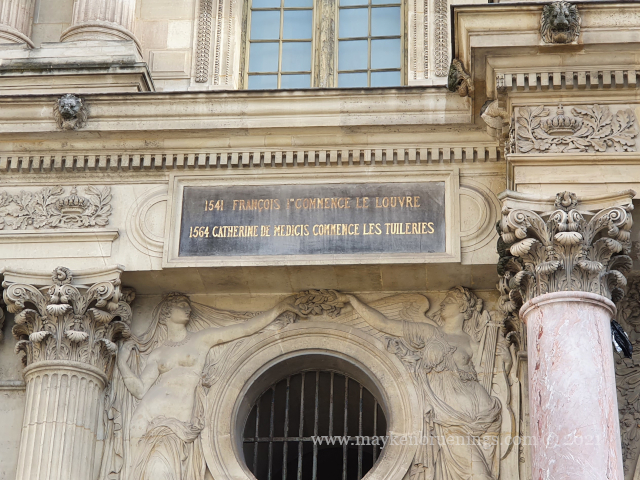
The Pyramids
The Louvre Pyramid was a subject of controversy when its project was presented. It was at the center of a project improving access to the museum, which couldn’t handle the growing visitor influx.
As confirmed by the Louvre, it consists of 673 panes, not 666 as myths will have it. (Count them if you want.)
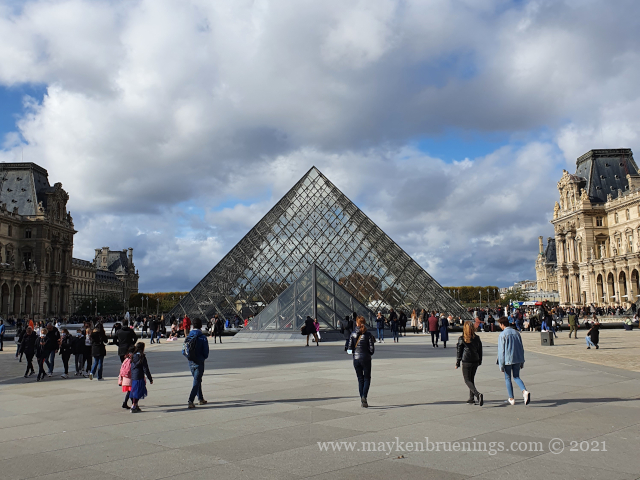
The inverted pyramid is an upside-down version that you can see from the Carrousel du Louvre shopping mall.
If you want to see the pyramid, don’t get off the métro at the stop Pyramides, however. This metro station is located on Avenue de l’Opéra [link], and the name is a reference to the Battle of the Pyramids of the French army under Napoléon Ier in 1798. Nothing to do with the Louvre pyramid, inaugurated in 1989.
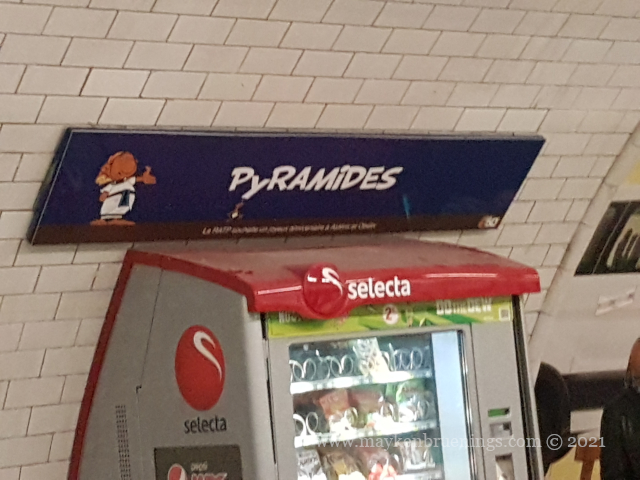
Free Entry
Did you know children have free entry to the Louvre Museum? In fact, up to the age of 18, entry is free, and if your country of residence belongs to the European Economic Area (EU, Norway, Iceland, Liechtenstein), it’s even up to 26 years.
